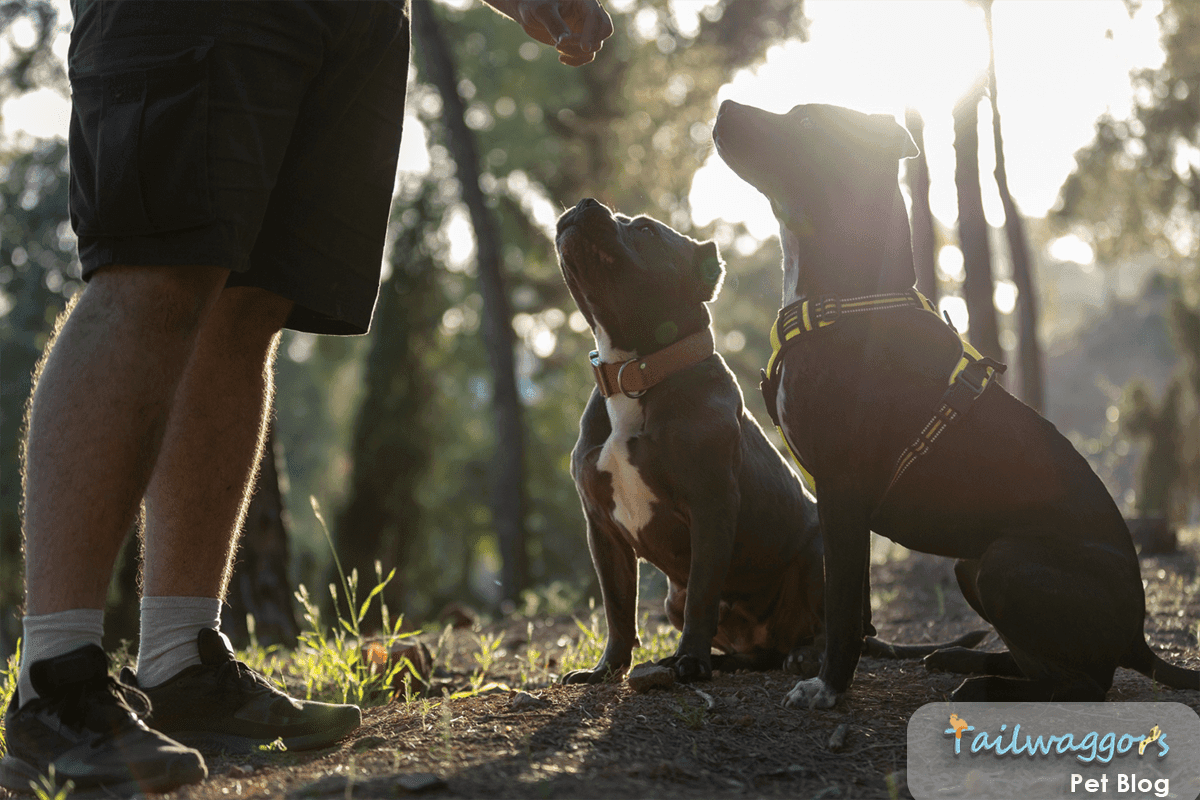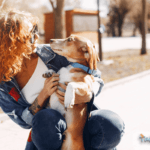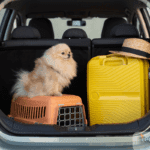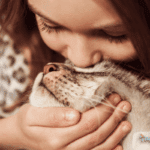Introduction
At Tailwaggors, we understand how much your furry companion means to you. Building a harmonious bond with your dog doesn’t have to be a challenge—especially when you use proven, science-based training techniques. Positive reinforcement has been shown to increase desired behaviors in dogs by up to 85% (Anderson & Wilson, 2023), making it one of the most effective ways to address unwanted behaviors while strengthening your relationship.
As Dr. Esther Knoetze, BSc, BVSc, a small animal veterinarian, I’ve seen firsthand how these humane, evidence-backed approaches can transform not only a dog’s behavior but also their connection with their owner. This guide will provide you with practical tools, expert insights, and actionable advice to foster positive behavior in your dog while ensuring they thrive.
“Training isn’t just about obedience—it’s about building trust and creating an environment where your dog feels safe, confident, and loved.”
— Dr. Esther Knoetze (BSc)(BVSc)
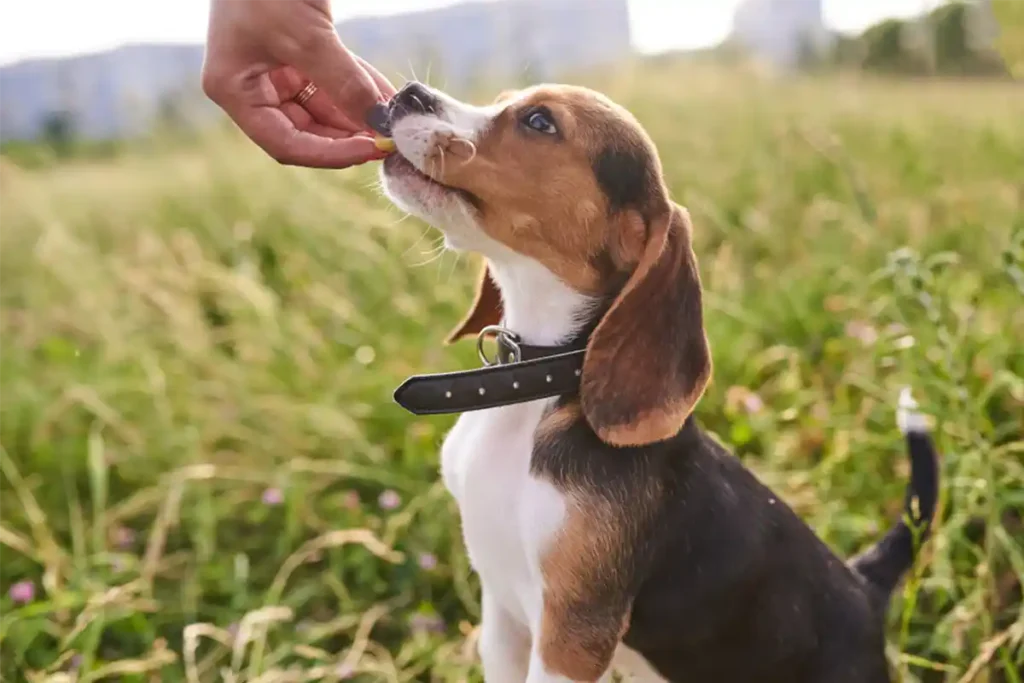
The Science Behind Positive Reinforcement
What is Positive Reinforcement?
Positive reinforcement is a method of training that rewards desired behaviors to encourage their repetition. Unlike punishment-based techniques, which can create fear and anxiety, this approach fosters trust, enthusiasm, and a willingness to learn.
How It Works:
- Behavior: Your dog performs a desired action, such as sitting.
- Reward: You immediately provide a reward, such as a treat, toy, or praise.
- Repetition: Your dog learns to associate the behavior with positive outcomes and is more likely to repeat it.
“In my practice, I’ve seen dogs who struggled with anxiety or aggression blossom into confident, well-adjusted companions through consistent positive reinforcement,” says Dr. Knoetze.
Why Science Supports Positive Reinforcement
Numerous studies confirm the effectiveness of reward-based training:
- Better Learning Outcomes: Dogs trained with positive reinforcement learn up to 40% faster compared to those trained with correction-based methods (Thompson et al., 2023).
- Reduced Stress Levels: Positive reinforcement minimizes anxiety and fear, creating a safe learning environment.
- Stronger Bond: This method fosters trust and strengthens the human-animal bond, making training enjoyable for both parties.
Example 1: A hyperactive Labrador that jumped on guests every time the doorbell rang learned to sit calmly within weeks. By rewarding the dog for sitting after hearing the doorbell, the behavior was quickly reinforced, creating a new and more manageable default response.
Example 2: A rescue dog with severe separation anxiety became calmer after being rewarded for staying in their designated spot when the owner left the room. Consistent rewards helped the dog feel secure and reduced their anxiety over time.
Related Reading:
Check out Understanding Separation Anxiety in Dogs for more tips on how to manage anxiety-driven behaviors.
Key Benefits of Positive Reinforcement
- Builds Trust: Dogs feel safe and motivated to learn.
- Promotes Faster Learning: Immediate rewards reinforce the behavior.
- Encourages a Positive Emotional State: Dogs enjoy the process and become eager participants.
Related Reading:
Looking to strengthen your bond with your dog? Explore Deepening the Bond: 7 Proven Strategies to Strengthen Your Connection with Your Pet.
How to Apply Science to Everyday Training
- Timing Is Everything: Reward within 1–2 seconds of the behavior to ensure a clear association.
- Consistency Across Commands: All family members should use the same words and cues.
- Use High-Value Rewards: Tailor rewards to what your dog loves most, such as soft treats, favorite toys, or verbal praise.
Snippet-Ready Answer:
What is positive reinforcement? Positive reinforcement is a science-based training method where dogs are rewarded for desired behaviors, encouraging them to repeat those actions.
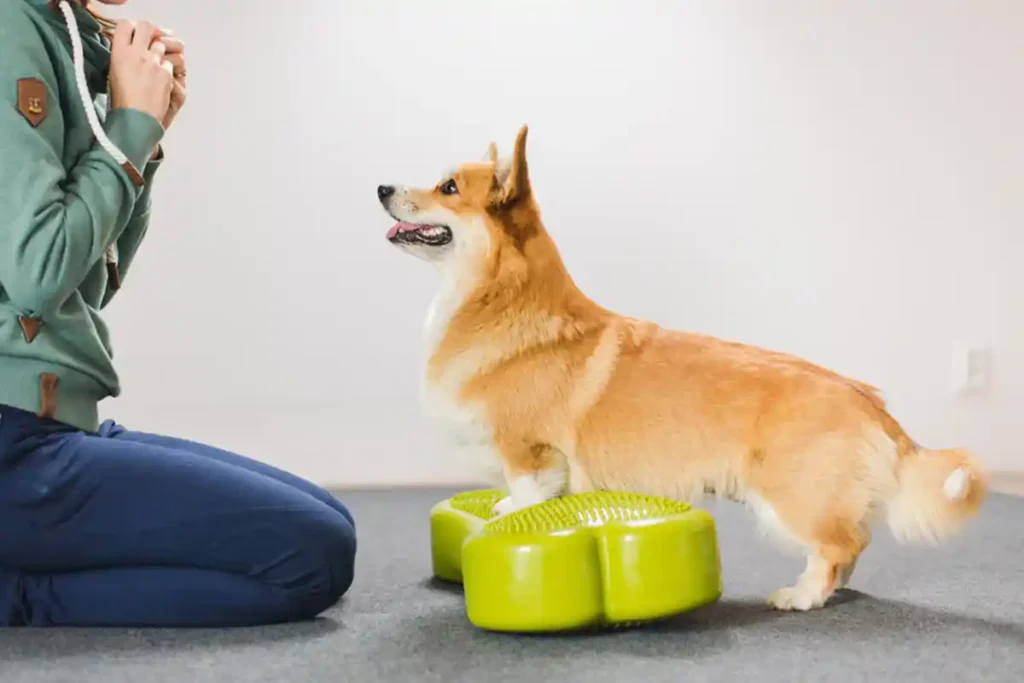
Foundations for Successful Training
Positive reinforcement training works best when paired with clear strategies and structured routines. This section will help you understand the critical building blocks for success, including timing, rewards, and recognizing your dog’s cues.
Timing and Consistency
Timing and consistency are the cornerstones of effective training. Rewarding a behavior within 1–2 seconds ensures your dog understands what action earned the reward. Similarly, consistent cues and responses from everyone in the household reinforce learning.
“Inconsistent timing or mixed signals can confuse your dog and slow progress,” explains Dr. Knoetze. “For example, rewarding a dog too late can inadvertently reinforce the wrong behavior.”
Pro Tip: If you struggle with timing, use a clicker to mark the precise moment your dog performs the desired behavior.
Types of Rewards
Dogs, like people, have preferences, so identifying what motivates your pet is essential. Rewards can range from food treats to praise or playtime, depending on your dog’s personality and preferences.
Reward Ideas:
- High-Value Treats: Soft, smelly treats like cheese, chicken, or liver bites.
- Toys: Tug ropes, squeaky toys, or favorite balls.
- Praise and Affection: Enthusiastic verbal praise paired with belly rubs or ear scratches.
- Activities: Games like fetch or a walk in their favorite park.
“Some dogs, especially high-energy breeds, respond better to playtime or toys than food,” notes Dr. Knoetze.
Example: A Border Collie that didn’t respond to treats thrived with a reward system involving their favorite frisbee. After completing a command, a few minutes of play reinforced the behavior effectively.
Related Reading:
Explore more ways to keep your dog happy with 9 Simple Ways to Make Your Dogs Happy: Vet-Approved Tips.
Understanding Your Dog’s Body Language
Learning to interpret your dog’s body language helps you recognize when they’re engaged, confused, or stressed. Here are some common signals to watch for:
| Body Language | What It Means |
|---|---|
| Relaxed Wagging Tail | Your dog is happy and ready to engage. |
| Pinned Ears | Indicates stress, fear, or discomfort. |
| Lip Licking or Yawning | Signs of mild anxiety or uncertainty. |
| Play Bow | Your dog is eager to interact and have fun. |
“Understanding your dog’s signals allows you to adjust your training approach in real-time,” explains Dr. Knoetze. “For example, if your dog starts yawning during a session, it might be time for a short break.”
Pro Tip: Use calming cues, like a gentle tone of voice or treats, to reassure your dog if they seem stressed.
Related Reading:
Need help identifying stress signals? Check out Why Does Your Dog’s Tongue Stick Out? Here Are 5 Vet-Reviewed Reasons.
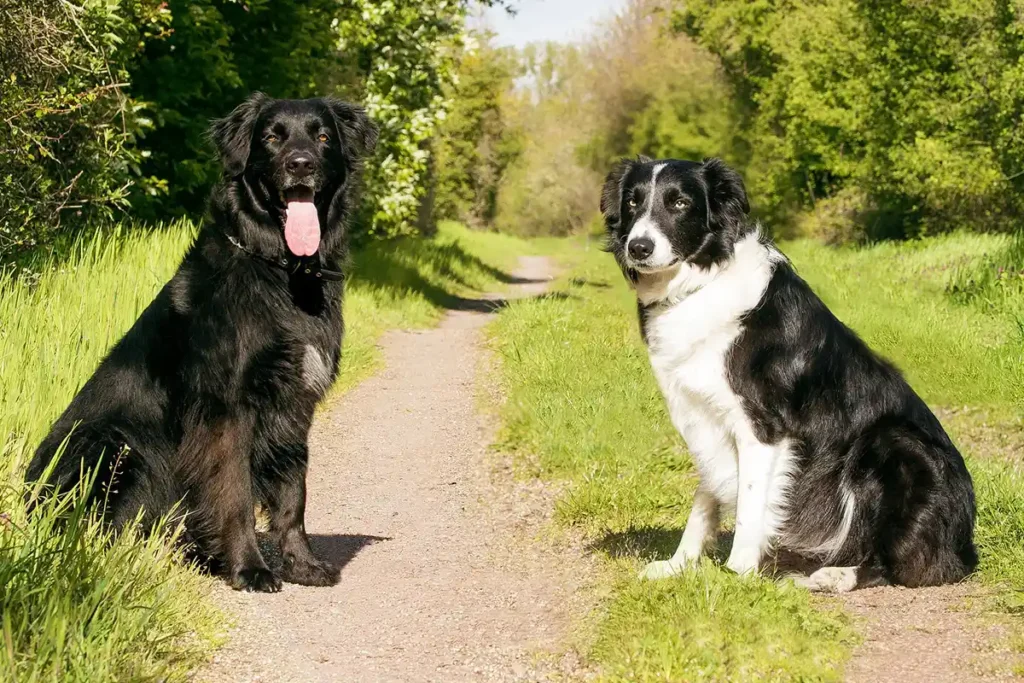
Building Effective Routines
Dogs thrive on structure. A consistent routine not only improves training outcomes but also reduces anxiety by creating predictability.
Daily Training Schedule
Here’s a sample daily routine designed to balance physical exercise, mental stimulation, and bonding time:
| Time | Activity | Purpose |
|---|---|---|
| Morning | 30-minute walk or play | Physical exercise and bonding |
| Mid-Morning | Training session (10 minutes) | Reinforce basic commands |
| Afternoon | Puzzle toys or scent games | Mental stimulation and enrichment |
| Evening | Gentle play or cuddle time | Strengthen emotional connection |
Example: A high-energy Husky benefitted significantly from a consistent routine that included two daily walks, mental challenges like puzzle feeders, and evening cuddles. This structure reduced destructive behaviors like chewing and digging.
Related Reading:
Learn how to integrate routines with grooming in How to Bathe a Dog: Expert Tips for Stress-Free Grooming.
Mental Stimulation Activities
Boredom is one of the leading causes of undesirable behaviors in dogs. Incorporating mental challenges keeps your dog engaged and satisfied.
Activities to Try:
- Puzzle Toys: Stuff a Kong with peanut butter or kibble for a rewarding challenge.
- Scent Work: Hide treats around the house and encourage your dog to sniff them out.
- Learning New Tricks: Introduce fun commands like “spin” or “shake.”
Example: A Golden Retriever with a tendency to bark excessively became calmer after engaging in daily scent work. Searching for treats redirected their energy and provided mental stimulation.
Related Reading:
Find more enrichment ideas tailored to specific breeds in Your Ultimate Guide to Shih Tzu Dogs.
Creating Positive Associations
Pair training with enjoyable activities to build positive associations. For instance:
- Offer a treat after clipping nails or grooming.
- Use playtime as a reward for completing training sessions.
“Pairing rewards with potentially stressful situations, like grooming or vet visits, helps your dog feel more at ease,” advises Dr. Knoetze.
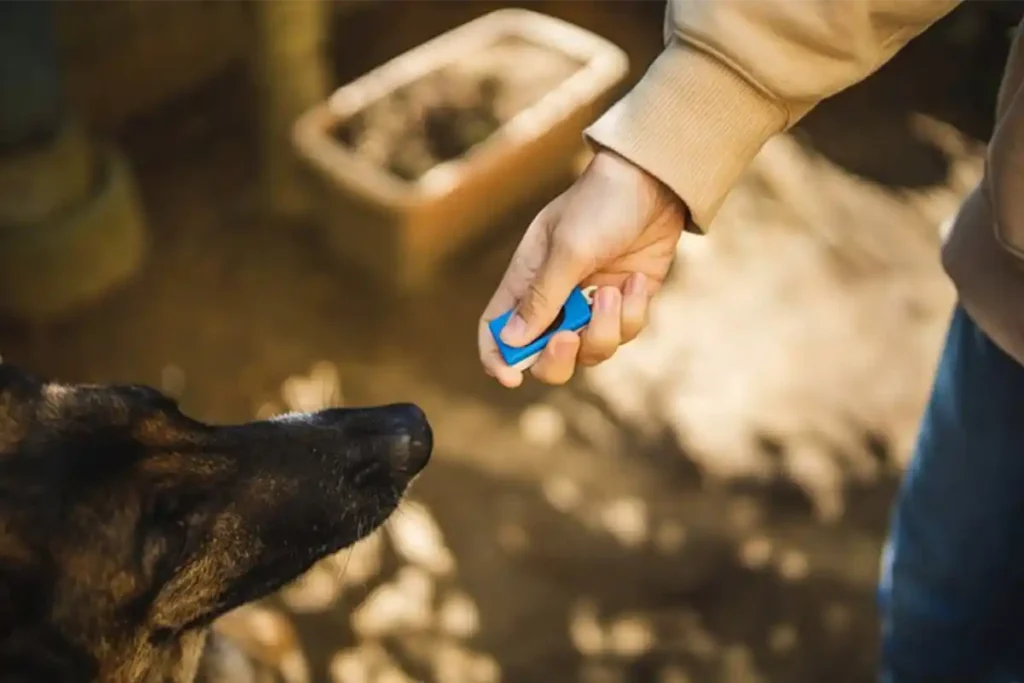
Step-by-Step Training Methods
Teaching your dog foundational commands is the cornerstone of building good behavior. These step-by-step instructions will help your dog learn essential skills while keeping training fun and engaging.
Teaching Basic Commands
Start with commands like “sit” and “stay,” which set the stage for more advanced behaviors. Here’s how to teach “sit”:
Steps to Teach “Sit”:
- Prepare a High-Value Reward: Choose a treat your dog loves, such as soft chicken or cheese.
- Lure the Behavior: Hold the treat close to your dog’s nose, then move it upward. As their head follows, their bottom will naturally lower.
- Mark the Action: The moment your dog sits, say “sit” and immediately give the treat.
- Repeat Short Sessions: Practice 5-10 times per session, keeping training fun and stress-free.
“Teaching foundational commands like ‘sit’ is about building trust and communication,” explains Dr. Knoetze. “Consistency and patience are key to success.”
Example: A playful Boxer learned to sit in just three days by practicing before mealtime, when they were naturally motivated by hunger.
Related Reading:
Check out 11 Warning Signs You Should Take Your Dog to the Vet to ensure health issues aren’t affecting your dog’s training progress.
Using Clicker Training
Clicker training is an effective, science-backed method that uses a sound to mark desired behaviors, making communication clear and precise.
Steps for Clicker Training:
- Charge the Clicker: Click and immediately give your dog a treat until they associate the sound with a reward.
- Mark the Behavior: Click the moment your dog performs the desired action (e.g., sitting).
- Introduce the Cue: Once your dog consistently performs the action, add the verbal command (e.g., “sit”).
- Phase Out the Clicker: Gradually use the clicker less as your dog masters the behavior.
“In my practice, clicker training has been especially effective for shy or anxious dogs who respond better to clear, non-verbal cues,” says Dr. Knoetze.
Example: A rescue dog with a history of abuse learned to associate the clicker with positive outcomes, making training less intimidating and more enjoyable.
Transitioning to Verbal Commands
Once your dog reliably follows a command, you can reduce reliance on physical gestures or clickers.
Steps to Transition:
- Start by saying the verbal cue (e.g., “sit”) before guiding your dog into the behavior.
- Gradually minimize gestures or props while continuing to reward success.
- Reward intermittently to maintain motivation.
Pro Tip: Keep verbal cues short and consistent across all family members to avoid confusion.
Related Reading:
Learn how training can enhance your dog’s emergency response in Veterinarian’s Complete Dog’s Emergency Guide.
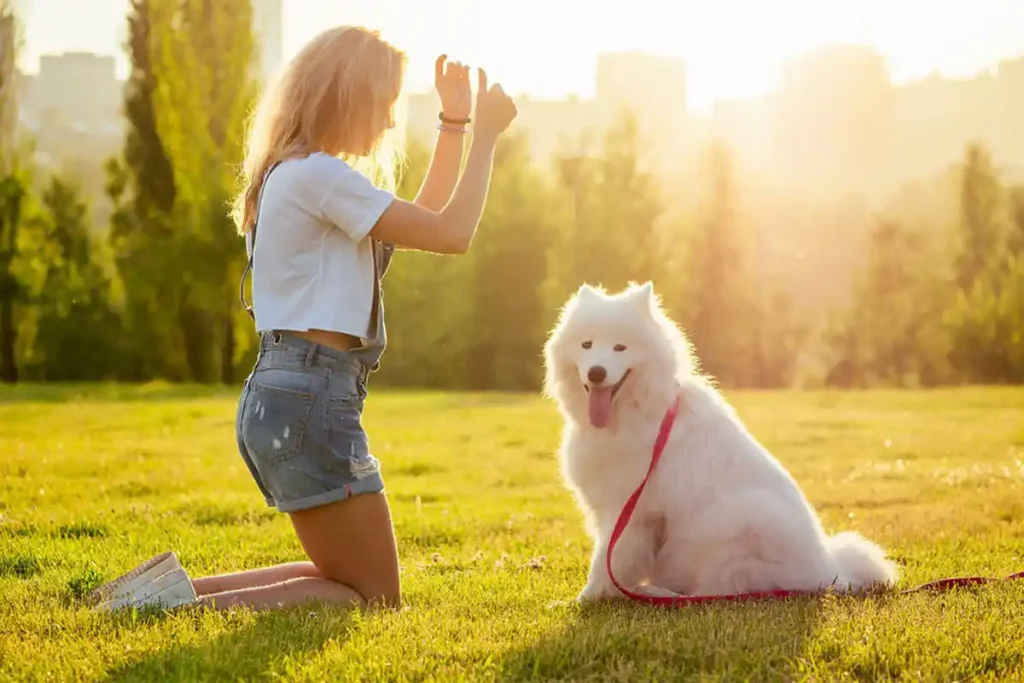
Advanced Behavior Modification Techniques
After mastering the basics, advanced techniques can help resolve problem behaviors and refine your dog’s skills.
Addressing Problem Behaviors
Some dogs struggle with specific behaviors, such as barking, leash pulling, or separation anxiety. Positive reinforcement paired with counter-conditioning and desensitization is key.
Example: Excessive Barking
- Identify the Trigger: Determine what prompts barking (e.g., the doorbell).
- Introduce the Trigger Gradually: Play a doorbell recording at a low volume while rewarding calm behavior.
- Increase Intensity Over Time: Gradually increase the volume and reward calmness at each step.
- Practice Real-Life Scenarios: Test with an actual doorbell and reward quiet behavior.
“Counter-conditioning helps dogs form positive associations with previously stressful triggers,” explains Dr. Knoetze.
Example: A Poodle with a fear of strangers stopped barking at visitors after consistent desensitization training paired with high-value rewards.
Socialization Strategies
Proper socialization ensures your dog feels confident in new environments or around unfamiliar people and animals.
Steps for Effective Socialization:
- Start in a low-stress environment, such as a quiet park or one-on-one playdate.
- Gradually expose your dog to new stimuli, rewarding calm behavior.
- Watch for body language signals, like a tucked tail, which may indicate the need to slow down.
Pro Tip: Reward your dog for calm curiosity rather than forcing interactions, which can increase fear or anxiety.
Related Reading:
Explore how socialization works with multiple pets in How to Help Your Dog and Cat Coexist: The Ultimate Guide.
Life Stage Considerations
Every dog’s training needs change as they age. Tailor your approach to match their current stage of life:
- Puppies (2-6 months): Focus on socialization and basic commands.
- Adolescents (6-18 months): Address impulsive behaviors and reinforce consistency.
- Adults (18+ months): Introduce advanced training or tricks.
- Seniors (7+ years): Adjust physical activities to accommodate mobility while maintaining mental stimulation.
“Training at every stage of life not only enhances behavior but also keeps your dog mentally and physically healthy,” says Dr. Knoetze.
Learn more about Essential Training Commands and Practical Tips for Dog Owners.
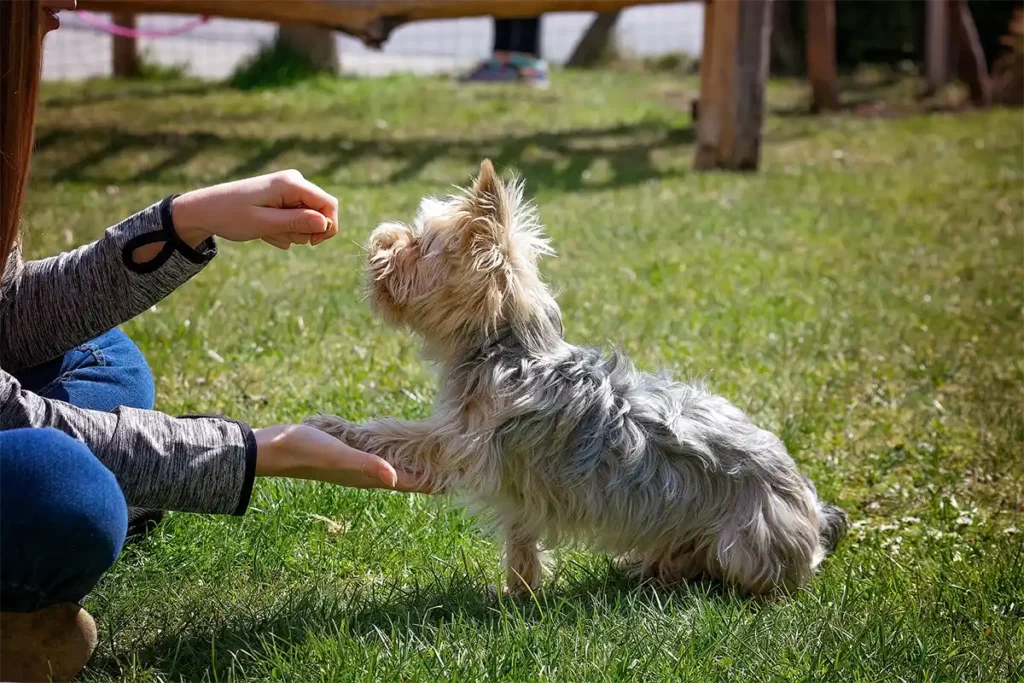
Troubleshooting Common Challenges
Even with the best intentions, training isn’t always smooth sailing. Whether it’s resistance from your dog or inconsistency among family members, addressing these challenges effectively ensures progress.
Dealing with Resistance
Some dogs may seem uninterested in training, but this doesn’t mean they can’t learn. Resistance often stems from confusion, low motivation, or distractions.
Strategies to Overcome Resistance:
- Use Higher-Value Rewards: Smelly treats like liver bites or chicken often work better than dry kibble.
- Shorten Training Sessions: Dogs with short attention spans may benefit from 5–7 minute sessions.
- Reduce Distractions: Train in a quiet environment to maintain focus.
- Reward Incremental Progress: Celebrate even small steps toward the desired behavior.
Example: A stubborn Dachshund who refused to “stay” began improving when the owner switched to short, focused sessions and used cheese as a reward.
“Every dog has their own pace. Celebrate small victories—they build confidence and pave the way for bigger successes,” advises Dr. Knoetze.
Consistency Across Family Members
Inconsistencies in commands or rewards can confuse dogs, slowing their progress. This is especially common in multi-person households.
Steps for Unified Training:
- Agree on Commands: Ensure everyone uses the same verbal and physical cues (e.g., everyone says “come” instead of variations like “here” or “over here”).
- Set a Shared Schedule: Synchronize training sessions across family members to reinforce consistency.
- Use a Training Plan: Write down commands, cues, and reward systems to avoid confusion.
Pro Tip: Hold a weekly “family training review” to align on methods and discuss progress.
“Unified efforts lead to faster results. Mixed signals from different family members can unintentionally confuse even the most eager learners,” explains Dr. Knoetze.
Knowing When to Seek Professional Help
Sometimes, behavior challenges require the expertise of a certified trainer or veterinary behaviorist. Recognizing when to seek help ensures your dog gets the support they need.
Signs It’s Time to Call a Professional:
- Persistent aggression toward people or other animals.
- Severe anxiety causing destructive behaviors.
- Lack of progress despite consistent training efforts.
- Extreme fear responses to everyday situations.
“In my practice, I’ve seen countless cases where professional guidance helped dogs and their owners overcome even the toughest challenges,” says Dr. Knoetze.
Example: A reactive German Shepherd overcame leash aggression in six months with the combined help of a veterinary behaviorist and a consistent training routine.
Snippet-Ready Answer: When should I hire a dog behaviorist? Consult a professional if your dog displays persistent aggression, severe anxiety, or doesn’t improve with regular training.
Related Reading:
Learn how to address behavioral challenges with practical tips in Is Your Dog Depressed? 4 Warning Signs and What to Do.
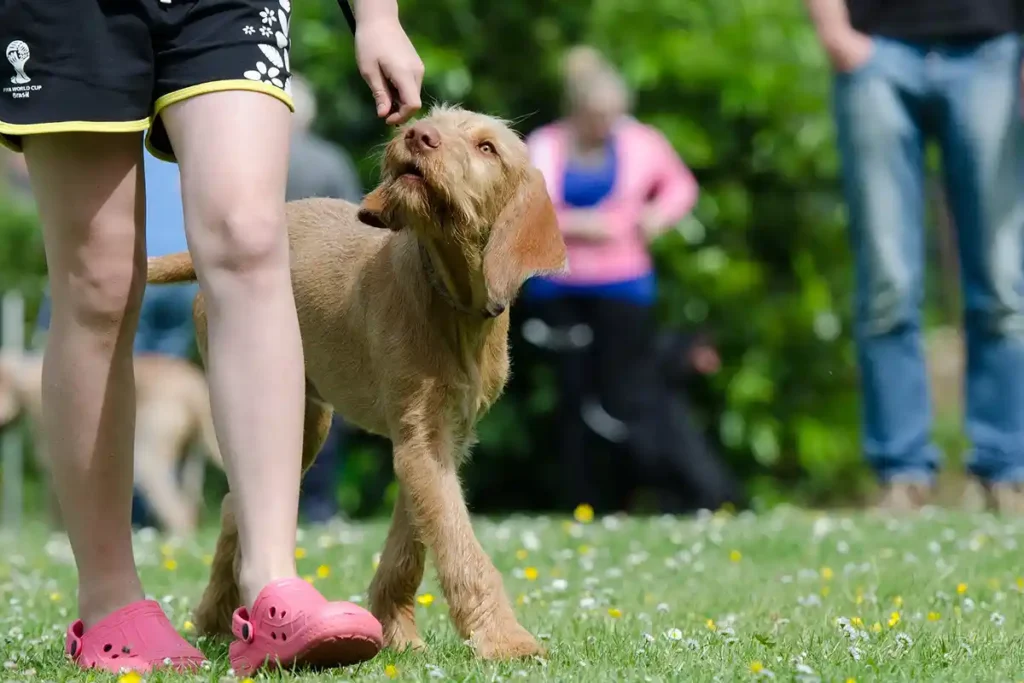
Tracking and Measuring Progress
Tracking your dog’s progress keeps you motivated and ensures you’re on the right path. Using simple tools like logs or apps can help identify what’s working and where adjustments are needed.
Behavior Logs and Tools
Documenting your training sessions is an effective way to stay consistent and objective.
Recommended Tools:
- Behavior Logs: Keep a notebook to record successes, challenges, and milestones.
- Training Apps: Apps like Pupford or Dogo provide structured programs and allow you to track progress.
- Video Diaries: Recording sessions can help identify subtle improvements over time.
“Many owners are surprised by how much progress they’ve made when they review their logs or videos,” says Dr. Knoetze.
Recognizing Milestones
Celebrating small wins helps reinforce your dog’s learning and keeps you motivated.
Examples of Milestones:
- Your dog responds to commands without hesitation.
- They remain calm in previously stressful situations, like meeting new dogs or hearing loud noises.
- They hold behaviors (e.g., “stay”) for extended periods.
Ways to Celebrate:
- Offer a special treat or extra playtime.
- Share your dog’s progress with family or friends.
Adjusting Techniques Over Time
Dogs grow and change, so it’s important to adapt your training approach to their life stage and evolving needs.
Examples:
- Adolescents: Focus on impulse control exercises to manage high energy.
- Seniors: Incorporate gentle mental stimulation to accommodate reduced mobility.
“As your dog ages, adapting your methods keeps training enjoyable and effective,” notes Dr. Knoetze.
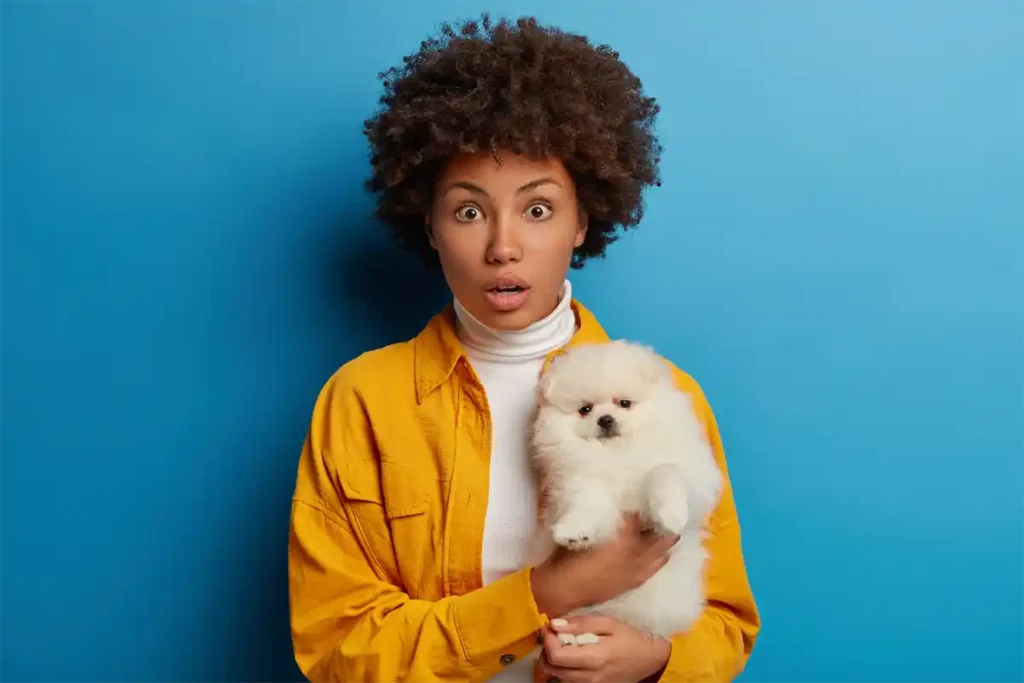
Frequently Asked Questions
Training a dog often raises questions, and addressing common concerns can help you stay confident and consistent in your approach.
What if my dog doesn’t respond to treats?
Not all dogs are food-motivated, but you can still use positive reinforcement with other rewards:
- Toys: Use a favorite ball, squeaky toy, or tug rope as a motivator.
- Praise: Verbal encouragement like “Good dog!” paired with a pat or belly rub works wonders.
- Playtime: Reward with a short game of fetch or tug-of-war.
Example: A playful Border Collie ignored food rewards but excelled in training sessions that ended with frisbee play.
“Experiment with different rewards to find what excites your dog the most. Every dog has their unique motivators,” says Dr. Knoetze.
How do I phase out treats without losing progress?
Gradually transitioning away from treats ensures your dog maintains good behavior without expecting constant rewards:
- Introduce Variable Reinforcement: Start rewarding only some repetitions of the behavior instead of every time.
- Pair Treats with Praise: Gradually rely more on verbal praise and less on treats.
- Increase Challenges: Add distractions or combine commands (e.g., “sit” followed by “stay”) before rewarding.
Snippet-Ready Answer: How do I phase out treats in training? Use variable reinforcement and replace treats with praise to maintain good behavior without dependency.
What are the best rewards for stubborn dogs?
Stubborn dogs often need high-value rewards to stay motivated. Try:
- Smelly Treats: Liver bites, tuna, or freeze-dried meat.
- Interactive Toys: Treat-dispensing balls or tug toys.
- Favorite Activities: Reward them with their favorite game, like fetch or chasing bubbles.
Example: A stubborn Bulldog learned leash manners with high-value liver treats and tug-of-war as rewards.
Related Reading:
Explore more enrichment options in 9 Simple Ways to Make Your Dogs Happy: Vet-Approved Tips.
When should I hire a dog behaviorist?
Certain challenges, such as aggression or extreme anxiety, require professional intervention. Signs you may need help include:
- Persistent aggression toward people or other pets.
- Severe separation anxiety causing destructive behaviors.
- Lack of progress despite consistent training.
Example: A reactive German Shepherd overcame severe leash aggression after working with a veterinary behaviorist who combined counter-conditioning techniques with medication.
“Professional guidance can transform even the most challenging behaviors, helping your dog lead a happier, more balanced life,” explains Dr. Knoetze.
Snippet-Ready Answer: When should I hire a dog behaviorist? Consult a professional if your dog shows persistent aggression, severe anxiety, or doesn’t improve with regular training.
How long does it take to train a dog?
Training timelines depend on your dog’s age, temperament, and the complexity of the behavior:
- Basic Commands: Sit or stay can take days to a few weeks.
- Advanced Commands or Problem Behaviors: Resolving issues like leash pulling or anxiety may take several months.
Pro Tip: Track your dog’s progress using logs or apps to measure improvement and stay motivated.
Conclusion
Positive reinforcement training is more than a method—it’s a way to build trust, strengthen your bond, and ensure your dog’s well-being. By using evidence-based techniques and staying consistent, you can address problem behaviors while creating a happy, harmonious life with your furry companion.
“Every dog learns at their own pace, but with patience, consistency, and love, every dog can thrive,” says Dr. Knoetze.
Key Takeaways
- Consistency is Critical: Unified commands and regular practice accelerate learning.
- Positive Reinforcement is Effective: Rewarding desired behaviors builds trust and reduces stress.
- Adapt Your Approach: Tailor training to your dog’s life stage and individual needs.
Next Steps
Ready to take your training journey further? Explore these related resources:
Transform your dog’s behavior with science-backed training methods! 🐕✨
🐾✨ Dr. Knoetze’s complete guide reveals proven positive reinforcement techniques, expert troubleshooting tips, and real success stories that’ll help you build an unbreakable bond with your furry friend.
Share with fellow dog parents and let’s create happier, well-behaved pups together! 🦮❤️


